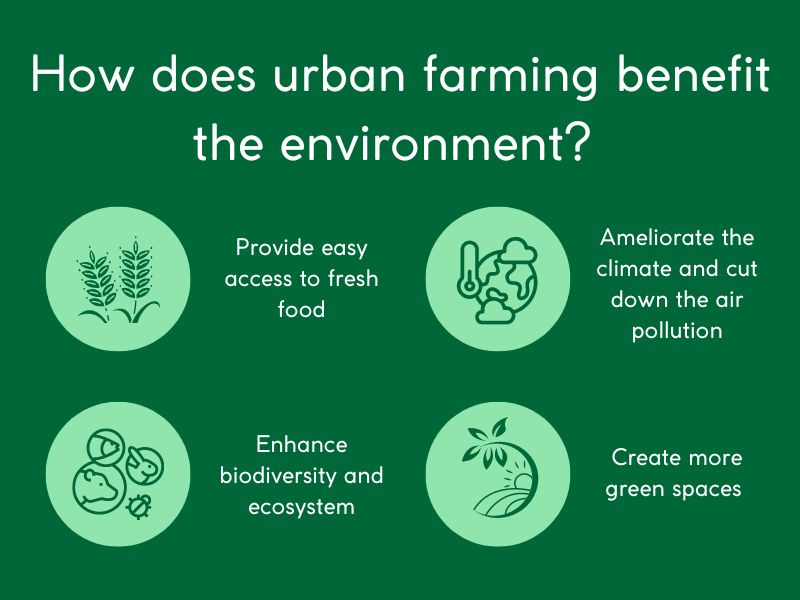City Blooming Fundamentals Explained
City Blooming Fundamentals Explained
Blog Article
The Greatest Guide To City Blooming
Table of ContentsExcitement About City BloomingCity Blooming Fundamentals ExplainedThings about City BloomingSome Known Facts About City Blooming.Some Known Incorrect Statements About City Blooming
Nature has incredible impacts on our physical and mental health, so it's no surprise that a straightforward succulent on a desktop computer or some potted natural herbs on a windowsill can instantly enhance an area. Take those plants an action further, and you'll go across into the area of city horticulture, which brings a lot more benefits to individuals and neighborhoods alike.Urban yards can be often tended by people, teams, firms, or organizations. The amount and selection of food grown can vary extensively, as well as the dimension of the job itself, but urban horticulture efforts are all rooted in a city setting.
Whether they are composed of a collection of pots on a porch or a cluster of plots on an uninhabited great deal, these yards offer more than food, using a host of ecological, financial, and social advantages. Since produce is expanded in local settings as opposed to far-away ranches, metropolitan horticulture reduces transport requirements, for that reason lowering carbon exhausts.
City Blooming for Dummies
Sustainable and natural agriculture removes or reduces much of the ecological damage that would certainly be incurred by industrial farming methods. Eco-friendly spaces in cities help in reducing the metropolitan heat island impact. Urban farming boosts local economic situations and supports regional food manufacturers. Community gardening jobs frequently use food at little or no charge, which helps bolster food spending plans and increase food safety and security. Urban yards can be devices of social modification that address injustices, systemic racism, and neighborhood advancement issues. Below at Cravings For Adjustment, we use food as a tool to construct health, riches, and social modification in North Minneapolis. We bring individuals with each other to learn, cook, eat, and grow food, creating modification that lasts.
Together, we can develop well-rooted and prospering change!.

The primary lesson we, as soon as again, have to discover is that cities are not divorced from nature. They belong of the larger biome in which they're situated. As coordinators and designers, we are trained to believe holistically. While these fields promote cities as useful, no city is perfect not also close, and the susceptabilities and affiliations of the international supply chain has impacted everybody in unanticipated means.
Things about City Blooming
I will certainly look at designs from the past that promoted urban gardens and gardeners, and show what worked and what did not. I will certainly go over the possibilities and obstacles of being a city garden enthusiast, what is needed to establish a garden of your own, and what regulations and requirements stand in the means of making cities better at advertising metropolitan yards.
The amount of time squandered getting to and from conventional workplaces has actually been well documented. One notable research ended that prior to the pandemic, Americans threw away an average of 54 hours a year travelling. The gathered adverse impacts of contamination and anxiety that result from commuting alone by car as most Americans do are substantial.
The capacity to come to the office for collaboration and society, and remain home for focused job is a concept that conserves time, is better for the atmosphere and is a smarter usage of restricted sources. What hasn't yet taken hold is the link in between these modifications in actions and how cities might respond.
Some Known Factual Statements About City Blooming
What are the health and wellness influences of our cities suddenly overdesigned for cars? Just how can our city infrastructure (roads, utilities) carry out better, not only as conduits to move people and products, but as contributors to natural systems? Urban sensations such as smoke, bad water top quality and the 'warmth island result' can be reduced by greening our streets, electrifying our lorries and growing our car park.
In a recent write-up in the Wall Street Journal, Richard Florida talked about the phenomenon of 'zoom cities,' which bring in remote workers by developing a photo of a better of life (indoor plants). He created: "For cities, remote job changes the focus from drawing business with unique offers to drawing ability with solutions and services
Urban gardening currently has numerous alternatives to help you expand food wherever you have room, such as with container horticulture, hydroponic gardening, and rooftop horticulture. This suggests you can regulate the place where you grow the food, and stress much less regarding environmental problems like dry spell or winter. see here You can choose what you wish to expand, exactly how you wish to expand it, and where you desire to grow.
4 Easy Facts About City Blooming Described
Expanding mass-produced food with traditional farming methods takes a great deal out of the world. Past the several resources that are used on the farm, the food then needs to be delivered where it is grown to a shop near you. That calls for melting a lot of fuel. On average in the U.S., food is now carried between 1,500 and 2,500 miles to reach the customer.

Report this page